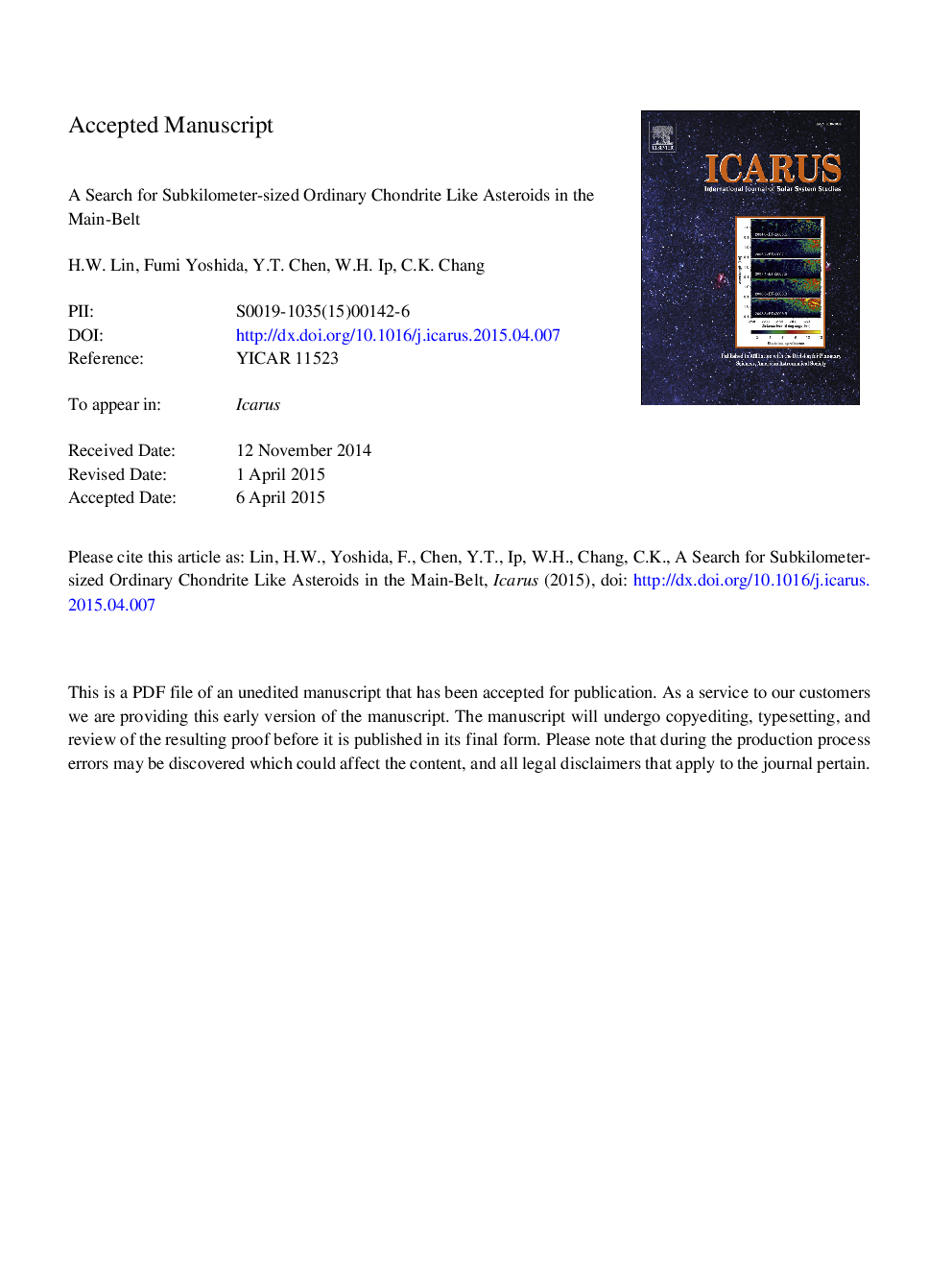| Article ID | Journal | Published Year | Pages | File Type |
|---|---|---|---|---|
| 8136304 | Icarus | 2015 | 33 Pages |
Abstract
From this observation, 75 of 150 MBAs with color uncertainty less than 0.1 were used in the spectral type analysis, and two possible Q-type asteroids were detected. This mean that the Q-type to S-type ratio in MBAs is <0.05. Meanwhile, the Q/S ratio in near Earth asteroids (NEAs) has been estimated to be 0.5-2 (Binzel, R.P. et al. [2004]. Icarus 107, 259-224; Dandy, C.L., Fitzsimmins, A., Collander-Brown, S.J. [2003]. Icarus 163, 363-373). Therefore, Q-type NEAs might be delivered from the main belt region with weathered, S-type surface into near Earth region and then obtain their Q-type, non-weathered surface after undergoing re-surfacing process there. The resurfacing mechanisms could be: 1. dispersal of surface material by tidal effect during planetary encounters (Binzel, R.P. et al. [2010]. Nature 463, 331-334; Nesvorný, D. et al. [2010]. Icarus 209, 510-519), 2. the YORP spin-up induced rotational-fission (Polishook, D. et al. [2014]. Icarus 233, 9-26) or surface re-arrangement, or 3. thermal degradation (Delbo, M. et al. [2014]. Nature 508, 233-236).
Related Topics
Physical Sciences and Engineering
Earth and Planetary Sciences
Space and Planetary Science
Authors
H.W. Lin, Fumi Yoshida, Y.T. Chen, W.H. Ip, C.K. Chang,
